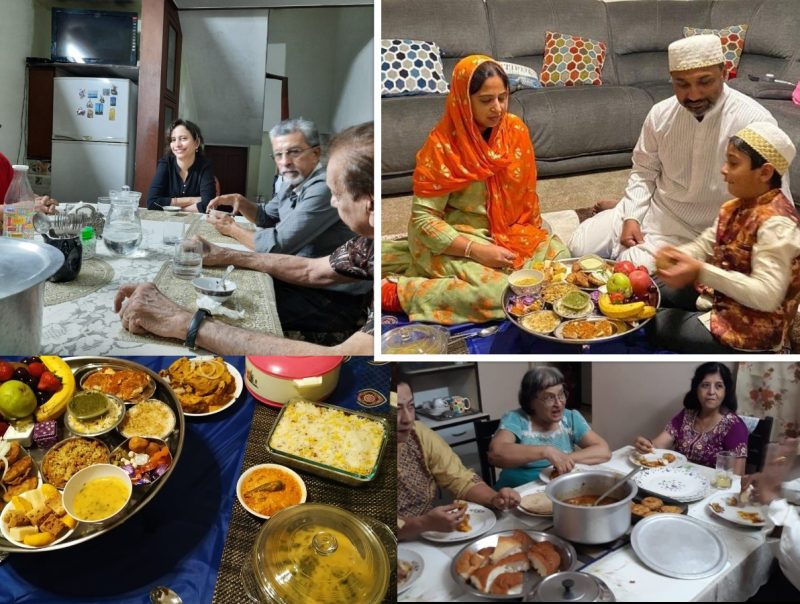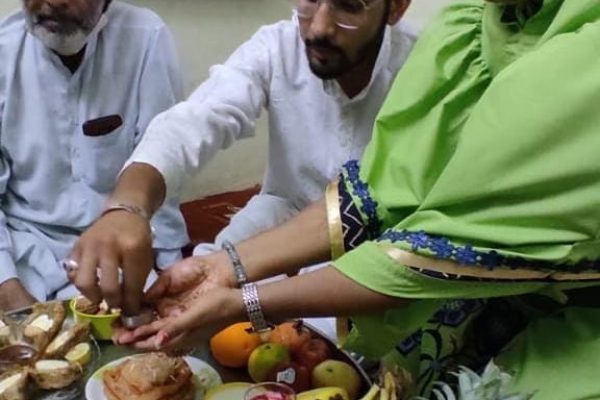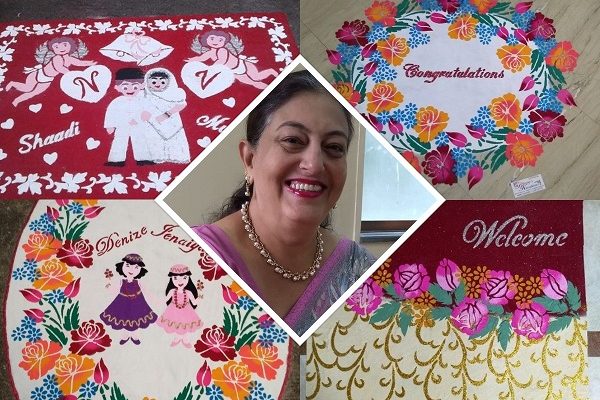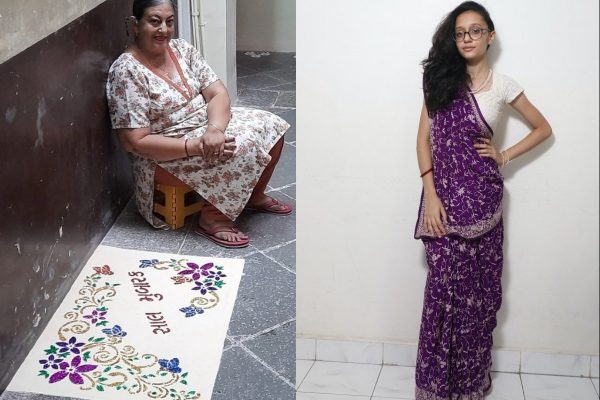With two zestful New Year feasts observed mid-August this year, the monsoon season is turning out to be even more flavourful. Get a feel of the unique rituals, scrumptious feasts and fervour as we bring you glimpses of some of the Parsi and Bohra families celebrating the special moments with their loved ones.
In a country thriving with diverse cultures and ethnicities, you don’t have to wait until December 31 to check out the New Year fests. This monsoon season is turning out to be even more flavourful than before with two New Year feasts observed in August this year. Check out the unique rituals, scrumptious feasts, and fervour as we bring you some exclusive glimpses of Parsi Navroz and Bohra Pehli Raat Thaal celebrations across India and world over.
The festivities marking the advent of different calendar years in India are distinct and unique to varied communities. The Parsis and the Dawoodi Bohras, considered as two of the most progressive communities of India, recently marked the new beginning with Navroz or Nowruz (Parsi New Year) and Bohra New Year’s Eve (Pehli Raat) Thaal (Observed to mark the beginning of the Hijri New Year or Islamic New Year with the advent of the month of Muharram).
Largely settled in Gujarat and Maharashtra but spread across the country and globally, the two communities are extremely closely knit and take great sense of pride in their distinct identities, well-preserved traditions and enormous contribution they have made to the prosperity of India. And if there’s one more thing that’s common between these two communities other than their Gujarati nativity, it’s the zest for their traditional cuisines. Well, they take their food very very seriously!
While the pandemic and social distancing norms did impact the extent of the celebration this year, the families kept up the festive mood in their homes. After all, New Year is all about positivity and hope.
Navroz Festivities – Hearty greetings & bonding over sumptuous food & more
Navroz, meaning “new day”, is the Persian New Year celebrated by Iranians and the Zoroastrian diaspora globally on March 21. However, in India, the Parsis (Zoroastrians who migrated to the Indian subcontinent from Persia between the 8 -10 century) follow the Shahenshahi calendar and hence celebrated Navroz on August 16 this year. The age-old presence of the Parsis in India clearly distinguishes their traditions from the Zoroastrians of Iran and the smaller Zoroastrian Indian community of Iran.
Chalk splendour: Rukshana Adi Haradhwala, who lives in Surat, misses going to Agiary (the Fire Temple) amidst pandemic. This Navroz, she called her near and dear ones on phone and greeted them. “Every year on Navroz, we are up early, get ready in new clothes and first visit the Fire Temple to pray for our wellbeing and meet and greet other families. We then come back home and have sev (Parsi word for vermicelli) and dahi (yogurt) in the breakfast and decorate our homes with flower Toran and Chalk.” Rukshana explains, “Chalk design on the doorstep brings in good omen and ward off the negative energies out of the home. Fish is the commonly used motif with greetings of ‘Navroz Mubarak’ or ‘Saal Mubarak’.”

Chalk is a fine limestone powder used with prefabricated designs at the main door entrance and inside the house at all door entrances. Chalk design is quintessential to all Parsi households in everyday lives. They get more intricate and elaborate on auspicious days such as weddings and Navjote (Initiation into Zoroastrianism).
Close Friends & Family Get-together: For Shiraz Daruwala, who lives in Indore, this Navroz was a very close get-together. Friends and family members gathered for a pot-luck dinner at her uncle’s place and enjoyed a cosy evening over food, drinks and old memories. Salli boti, pulao dal and fish curry and rice are some of her favourite picks of the day.

The one thing that Shiraz likes the most about their get-togethers is that it is very inclusive of all age groups. The young and elderly members of the family gel well with each other without any inhibitions, even in jokes and light-hearted banter.
Hijri New Year’s Eve
This year, the followers of Islam across the world are observing 1442th Hijri New Year. The Dawoodi Bohras, a sub-sect of the Ismā’īlī branch of Shia Islam, follow the Tabular Islamic calendar (Fatimid or Misri calendar) and hence observed the New Year’s Eve on August 18, 2020. Like every year, the Bohras marked this occasion with a special ritual of the Pehli Raat Thaal.

The Tradition of thaal in a Bohra household: The thaal is a traditional large round metal platter, which is an integral part of the Bohra way of life. In fact, gathering and sitting around thaal is how most Bohra families dine every single day. Interestingly, a dining table is only an optional piece of furniture, which may be conspicuously nonexistent in many of their households but a thaal is the quintessence of a typical Bohra kitchen.
Pehli Raat Thaal: On Hijri New Year’s Eve, considered as the auspicious night, the thaal is made more colourful, flavourful and special. The Bohras celebrates the Pehli Raat with their families in a truly tradition way. People dress up in festive outfits to welcome the New Year and thank the almighty for the blessings bestowed upon them in the year gone by and hope and pray for prosperity in the upcoming year. A delectable variety of authentic dishes is prepared and laid out on the thaal. “The more, the merrier” is how a thaal is planned for this Eve. In addition to the relishing snacks and main course dishes prepared, there are some must haves to be included in the thaal. These are salt, Shakrana (a signature Bohra dish of sweet rice garnished with dry fruits), yogurt, fish (depending on availability), fresh fruits, dry fruits, coconut and a silver coin, which is placed on the platter as a symbol of wealth.
After offering the Maghrib/Isha namaz, the family members gather around the thaal to partake in the feast. The ritual begins with “thaal wadarna” (with coconut cupped in hands, waving for seven times in full circles of the thaal). Next comes tasting a pinch of salt (This is in fact a Bohra tradition for any given meal for that matter) and then begins the meal with Shakrana…
An industrious community engaged mostly in flourishing trades and businesses, Bohras very keenly preserve what they consider their prized traditions, whether it’s their authentic food or religious rituals. No matter which part of the world they live in, the community sticks to its tradition to a T.
Asrashahee.in checks out how a Bohra family of Indian origin, residing in the US, keeps the community traditions aglow

Zinobia Alimohamed, who lives with her husband and 7-year-old son in South Carolina, United States, shares some of her vivid memories of one of her favourite festive nights during her childhood years in Udaipur, Rajasthan. “My Dad would start shopping fruits, sweets and other items a day before Pehli Raat, and on the other hand my Mom would get on with planning the menu… All these little things excited me big time.”
She recollects, “During the day of Pehli Raat (New Year’s Eve), we would call and wish all our relatives. Mom would be pretty much busy in the kitchen all the day, preparing a host of delicacies. In the evening, my best moment was decorating the thaal by getting out all the exclusive crockery and arranging the delightful treats. Little details still fresh like it was yesterday…”
Zinobia continues to keep her community traditions alive with the same gusto. “As a child, I observed these core traditions so deeply that after moving to the US a decade ago, it never was difficult for me to carry on the traditional values in my household. I still observe every single ritual with the same enthusiasm as I did when I was a child. I try my best to pass on these traditions to my 7-year-old.”





Quite insightful!
Thank you, Priyanka. Good to know you found it insightful. Your feedback means a lot.